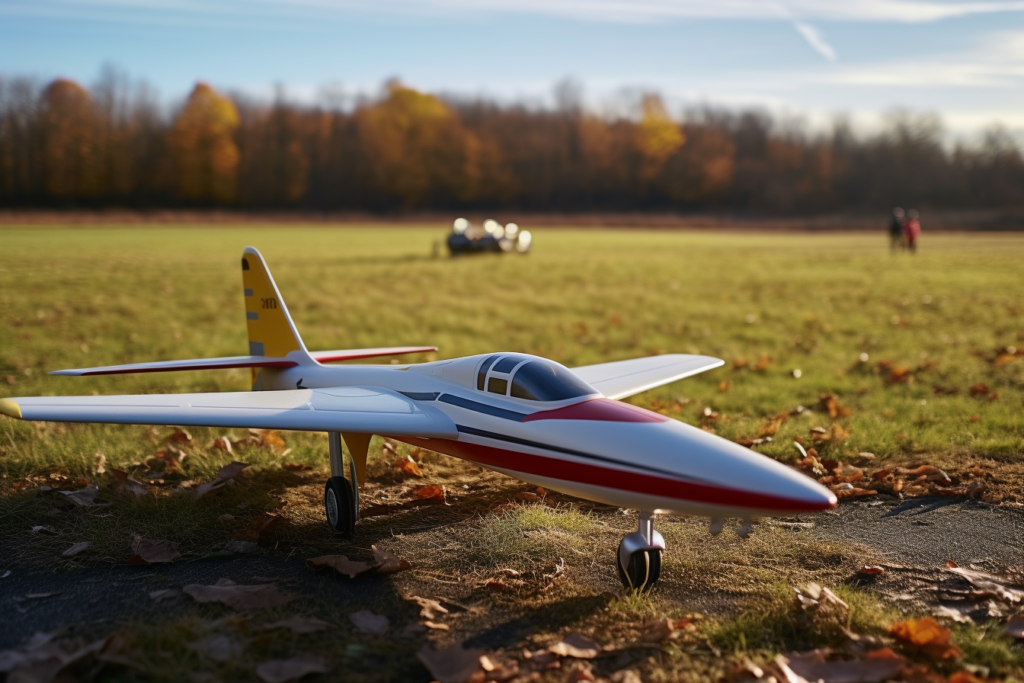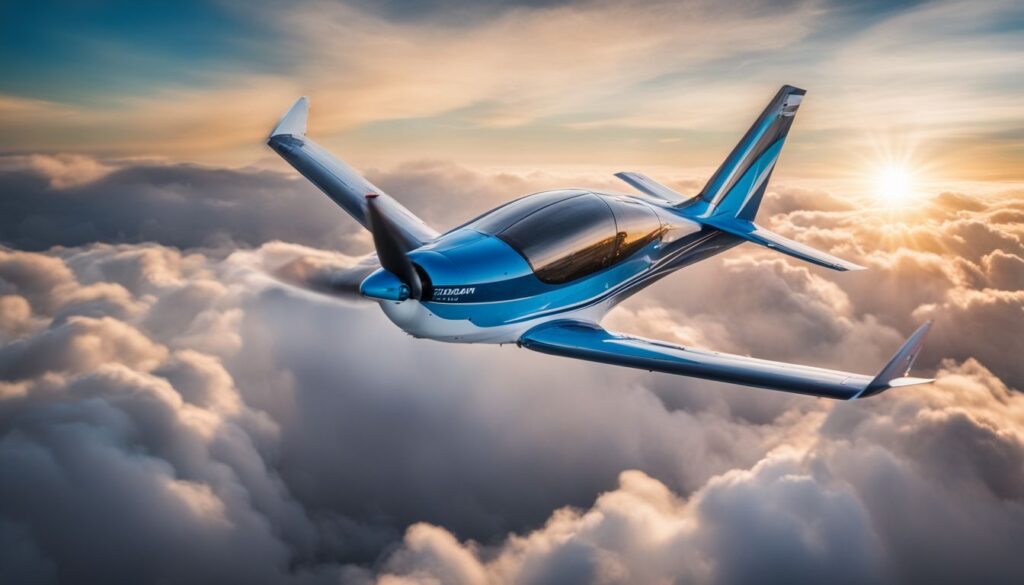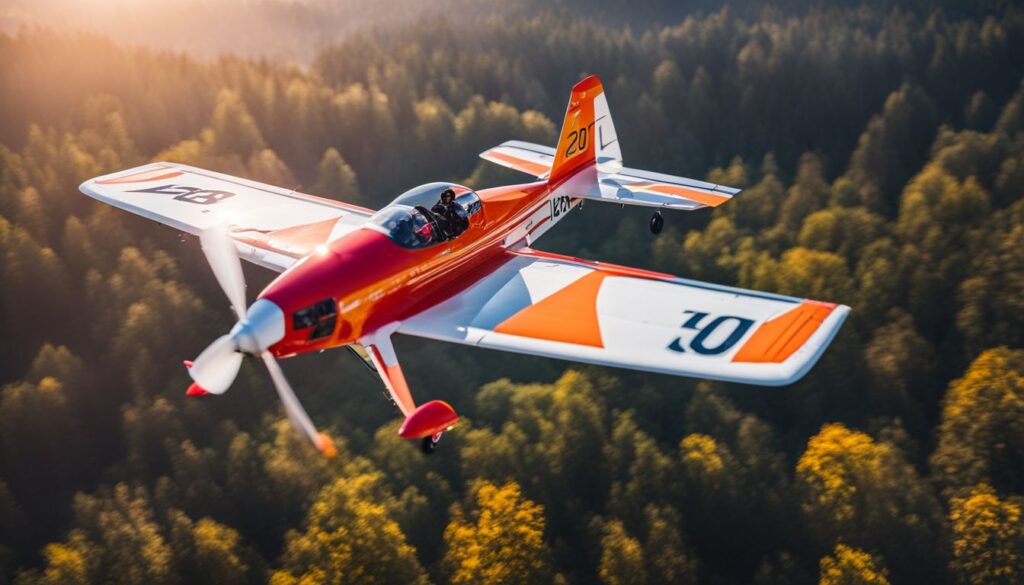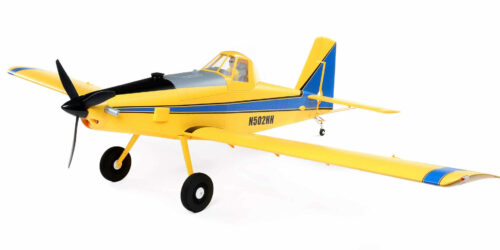How Fast Do Remote Control Planes Go? We Explore the World’s Fastest RC Plane
Please note that Books.org participates in the Amazon Services LLC Associates Program. This means that when you click on our links to Amazon.com and make a purchase, we may receive a small commission at no extra cost to you. This helps us continue to provide high-quality book recommendations and reviews. We truly appreciate your support!

When it comes to the exhilarating world of radio-controlled planes, one question often soars above the rest: how fast can these unmanned aircraft fly? The speed of an RC plane is a fascinating aspect, combining the thrill of piloting with the marvels of modern technology. These aircraft, often scale models of their larger counterparts, represent a unique blend of engineering and passion, offering an immersive experience in aircraft flying.
The range of speeds achievable by an RC plane can vary widely, depending on several factors. Typically, a standard balsa wood model – a favorite material among hobbyists for its light weight and strength – might restrict the aircraft’s speed to a certain degree. However, advancements in radio control technology have enabled these planes to reach impressive speeds. It’s not just about how fast a plane can fly; it’s about the precision with which it can be maneuvered at high velocities. The design of the plane, including its aerodynamics, power system, and weight, all play critical roles in determining its top speed.
Table of Contents
- Factors Affecting RC Plane Speed
- Maximum Speed of RC Planes
- How High Do RC Planes Go?
- Conclusion
- FAQs
Key Takeaways
- Remote control planes average a speed of 80 – 120 mph, but specialized models can soar at speeds up to an astonishing 564 mph.
- Engine type, drag, and thrust are major factors that determine the speed of RC planes with higher kv motors and smaller propellers usually leading to greater speeds.
- Spencer Lisenby holds the record for the fastest RC plane at 564 mph using dynamic soaring techniques despite FAA regulations capping model aircraft speeds at 100 mph.
- While flying high is part of the thrill, remote control planes face altitude limits set by the FAA at 400 feet, or even less if visibility becomes an issue.
- Transmitter range limitations and visibility constraints are vital considerations for safe and responsible operation of remote control planes within regulatory guidelines.
Factors Affecting RC Plane Speed

The speed of remote control planes is affected by the type of engine, the amount of drag it experiences, and the level of thrust it can generate. These factors play a critical role in determining how fast an RC plane can go.
Engine type
Engine type plays a crucial role in how fast I can get my RC plane to go. If I choose an electric motor with a high kv rating and pair it with a smaller propeller, it could really zoom through the air, thanks to increased thrust.
On the flip side, if I’m all about that jet-like experience, equipping my model with a turbine will give me that rush of speed – though it’s also more complex and costly.
But no matter what engine powers my flying marvel – be it an electric motor for cleaner and quieter fun or a gas-guzzling powerhouse for raw speed – getting the propulsion system just right is key.
Aligning the motor properly and tweaking the thrust angle ensures every flight is both swift and smooth. Now let’s talk about another factor that influences how fast these aircraft can fly: drag.
Drag
As I push my RC aircraft to higher speeds, I have to deal with drag—it’s what holds the plane back as it slices through the air. Think of it like running against a really strong wind; that force you feel is similar to what my model plane experiences in flight.
The faster my RC plane goes, especially when it exceeds 200 mph and aims for records like Spencer Lisenby’s dynamic soaring speed record, drag becomes a much bigger factor. At high velocities, even slight changes in airfoil design or wing loading can dramatically affect how much drag the aircraft has to overcome.
Reducing this resistance is key for anyone serious about remote control aviation performance. Since air acts thicker for scaled-down models due to increased viscosity effects, getting that perfect balance between lift and minimal drag is crucial.
Sometimes I’ll modify an existing RC airplane by strengthening its airframe from scratch or tweaking its construction techniques just so it cuts through the air more smoothly without sacrificing durability—anything over 110mph requires these adjustments if you don’t want your craft shaking apart mid-flight!
Thrust
Shifting gears from drag, let’s talk about thrust—the real powerhouse behind an RC plane’s speed. It’s all about finding that sweet spot where the push from the engine propels the plane forward without wobbling or losing altitude.
Think of it like a sprinter exploding off the blocks – too much thrust can cause your model to veer off course.
I make sure my planes have enough oomph by choosing a motor with higher kv and pairing it with just the right size propeller. This combo ramps up both speed and thrust, giving me that exhilarating whoosh as my aircraft cuts through the air like a knife through butter.
Keep in mind; more power means managing increased drag, but when you nail it, you’re bound for sky-high thrills.
Maximum Speed of RC Planes

The maximum speed of a remote control plane can vary depending on factors such as engine type, drag, and thrust. On average, RC planes can reach speeds between 80-120 mph, with the fastest recorded speed being an impressive 564 mph.
However, there are limitations such as FAA rules, transmitter range, and visibility that impact how fast these planes can go.
Average speed range (80-120 mph)
Remote control planes offer a thrilling speed range, typically zipping through the skies at speeds of 80 to 120 mph. This level of speed provides an exhilarating experience for hobbyists and enthusiasts alike.
With this range, you can enjoy the excitement of flying without compromising on control and maneuverability.
The average speed range of 80-120 mph allows for impressive aerial acrobatics while still being manageable for pilots of various skill levels. Whether you’re into aerobatics or just love feeling the rush of speed, remote control planes in this range deliver an exciting flying experience that keeps you engaged and entertained.
Fastest RC plane (564 mph)
Spencer Lisenby set the world record for the fastest RC airplane speed at a mind-blowing 564MPH, surpassing his previous record of 548MPH. This kind of speed is truly remarkable and showcases the incredible capabilities of modern remote control models.
It’s amazing to think about how far technology has advanced in allowing us to push the boundaries of what remote-controlled aircraft can achieve.
With such impressive advancements, it’s an exciting time for those interested in buying remote control models and toys. The potential for high-speed, thrilling flights is truly awe-inspiring and opens up new possibilities for enthusiasts seeking cutting-edge experiences with their RC planes.
Limitations (FAA rules, transmitter range, visibility)
As a remote control plane enthusiast, I’ve gathered some crucial information about the limitations that affect the speed and range of your RC planes. Here’s what you need to know:
- The FAA has set a maximum speed limit of 100 mph for remote control planes, ensuring safety and compliance with aviation regulations.
- The use of a long – range RC transmitter and receiver can potentially extend the range and visibility of remote control planes, providing greater freedom in flying your model aircraft.
- Implementing GPS control mode can bring back an aircraft within the entered range if it exceeds the maximum radius, offering added security and control for your RC plane flying experience.
- However, it’s essential to keep in mind that there are regulations in place concerning the operation of remote control planes, ensuring safe and responsible usage within specified boundaries.
How High Do RC Planes Go?
RC planes are subject to height restrictions by the FAA, as well as limitations in transmitter range and visibility. To learn more about this topic, keep reading!
FAA height restrictions
The FAA imposes a maximum altitude restriction of 400 feet for operating remote control planes and drones. This regulation ensures safety and prevents interference with manned aircraft.
However, exceptions exist if the model aircraft or drone is flown within close proximity to a structure or with prior authorization from air traffic control (ATC). For those considering purchasing remote control models and toys, it’s important to be aware of these height limitations to ensure compliance with aviation regulations.
Remote control enthusiasts should also note that the altitude limit for model rockets is set at 2000 feet, providing an additional factor to consider when engaging in hobbyist activities involving flying objects.
Transmitter range limitations
When considering the maximum height for operating remote control planes, it’s essential to also take into account transmitter range limitations. The range of an RC plane transmitter can be impacted by various factors, including the type of transmitter and frequency band used.
A higher frequency allows for the transmission of more data in the same time span, which influences the range of drone control. Hobbyists are continually seeking long-range RC transmitters and receivers to enhance their ability to operate their planes over greater distances.
The search for a reliable system is driven by hobbyists’ desire to fly their model aircraft with confidence and precision, even when pushed to extended ranges. As technology advances, so do these capabilities – offering enthusiasts new opportunities to explore and experience remote control flying in innovative ways.
Maximum height for visibility
Remote control planes have a limited visual line of sight distance for fixed-wing aircraft, allowing for a maximum altitude of 100 feet. This means that when flying a remote control plane, it is important to keep the aircraft within this height limit to maintain visibility and ensure safe operation.
By staying within this altitude range, you can effectively see and control your model aircraft while enjoying an exciting and enjoyable flying experience.
Conclusion
Remote control planes can reach speeds of up to 548 mph, setting world records for their incredible velocity. These high speeds are achieved through specialized designs and powerful engine types.
With most typical RC planes hitting speeds between 80 and 120 mph, enthusiasts are constantly pushing the boundaries of speed in the world of remote control aviation. The current record stands at a dazzling 564 mph, showcasing the impressive potential of these miniature flying machines.
FAQs
1. How fast can a remote control plane fly?
A remote control plane, or RC plane, can reach speeds from 50 mph for basic models to over 150 mph for advanced jet engine-powered versions.
2. What is the world record speed for an RC plane?
The world speed record for an RC plane was set by a jet model reaching a staggering 548 mph using a technique called dynamic soaring.
3. Can all RC planes go really fast?
No, not all RC planes are designed to be super fast. Trainer aircraft generally have lower airspeeds around 50-70 mph, making them easier and safer for beginners to operate.
4. Do bigger RC planes fly faster than smaller ones?
Size doesn’t always determine speed; it’s more about the design of the model and whether it has features like jet engines or special airfoils that allow it to reach higher airspeeds.
5. Does wind affect how fast an RC glider can go?
Yes, wind plays a big role in flying an unpowered glider. Using wind currents with slope soaring or dynamic soaring techniques can significantly increase the speed of the glider.
6. What should I know before trying to fly my RC at high speeds?
It’s important that enthusiasts who wish to operate faster models follow AMA guidelines, strengthen their aircraft’s airframe if needed, and understand flight control basics for safe handling at high speeds.
Amazon and the Amazon logo are trademarks of Amazon.com, Inc, or its affiliates.


